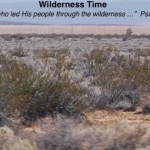Sunday, January 31, 2016
How can joy and sadness be spiritually healthy?
For many, joy and sadness would be an unlikely partnership. However, for Rev. Jana Purkis-Brash the exact opposite is the case. Happiness is healthy, so is sadness and both need to go together. She based her text on Psalm 139 and John 16:16-24 and concluded: “My prayer for us is that Joy and Sadness are woven together in such a way that we are spiritually healthy and that our joy is rooted. “


There is a small part of me that is thankful for the blizzard last week. Let me explain. As I moved through the week preparing my sermon on Joy, I became more and more concerned that Joy and Sadness really needed to be together. In order to fully understand the healthy roles of these two emotions, they need to be brought together as a team. So because of the storm and canceling worship last week, I have been able to do just that. We will see how this unlikely partnership helps us as we seek to be spiritually healthy and whole.
A focus of Inside Out is the grounding of happiness. In a society that seeks joy in comfort, silliness, and diversion, Pixar presents a different picture of the full life. Being happy is not about eliminating or even minimizing emotions not named Joy. No one in history has ever succeeded with that approach. Inside Out refreshingly declares that the good life is not free from sadness or anger, but allows joy to live in a harmony with those other less comfortable emotions.
As we’ve mentioned previously the film enters the mind of a preteen, Riley, whose life has been disrupted by a cross-country move. The film’s brilliance is in embracing the brokenness we all face. We all experience it, and yet so few stories on TV and on the big screen help us process and endure it. In Inside Out, life is hard, but not hopeless. Grief and sadness are meaningful, even valuable experiences.
We see Joy as the irrepressible “Pollyanna” of the emotions at work within Riley—she flatly refuses to let life’s problems get her down and by extension, bring Riley down, so when Sadness comes on the scene during Riley’s infancy, Joy sees her as a problem to be overcome. As Riley grows, so do Joy’s frustrations with Sadness, particularly when she discovers that Sadness has the capacity to turn the glowing golden orbs of Riley’s happy memories sad by touching them. When Sadness causes herself and Joy—along with Riley’s core memories—to be sucked into the larger world of Riley’s mind, the two emotions must work together to make their way back to Headquarters and set things right.
It is on this journey through Riley’s mind that Joy begins to see the need for Sadness, and more importantly, comes to a deeper understanding of what joy really is. To this point, Joy has seen herself as a cheerleader—the one around whom the other emotions rally in order to help Riley make happy memories, leading (as Joy describes it) to perfect days, weeks, months, years, and ultimately, a perfect life.
Joy in comfort, in silliness, in sports can be happy for a time, but there are no roots, at least not strong ones. It’s fragile. One embarrassing moment in front of the class and it all comes crashing down. If life is about preserving that simple, child-like, playful happiness, then we’re all lost and helpless.
Eventually — and sometimes very early on — life removes its kid gloves — the unexpected move, betrayal, divorce, sickness, failure, loss. Life will steal a child’s happiness at age seven or seventeen or thirty-seven, and if we don’t have a plan for joy after sadness comes, we’ll be left frustrated, confused, and bitter. The film displays the futility of shortsighted, over-protective happiness.
The story begins with Joy frantically — though relentlessly cheerfully — micromanaging the team of emotions, striving to keep everything and everyone calm, predictable, and happy. The simplicity of a child’s life lends itself to lots of simple and repeatable pleasure. By the end, though, Joy cherishes and cooperates with the others, seeing their inevitable and even critical roles in Riley’s life.
Inside Out grounds joy — which in and of itself sets it apart from so many other movies — but still leaves it rootless. The joy is real and even mature, but it’s not safe or reliable. It’s not made or even expected to last the stormy waves that will crash into our lives. When one island of personality falls — whether silliness or hockey or friendship — we’ll start building another.
The message of Inside Out says that joy in this life can be real even when mixed with darker, harder memories and experiences. The film creatively and effectively protects us from thinking life is meant to be easy, fun, and carefree. True joy, the kind that survives suffering and endures pain, is not cheap or easy. It’s laced — woven through and through — with sadness. So it is with Christ in an even more profound way. We are “sorrowful, yet always rejoicing,” and our joy is all the deeper and more enduring because of the grief.
Joy is a frantic (albeit happy) character trying to run the show. She vigilantly guards against Sadness getting too much time at the control panel and from touching any of the memories and turning them blue/sad.
Check out this clip where Joy tries to keep sadness in her place.
To continue, click https://princetonumc.info/wp-content/uploads/2016/02/Rev.pdf for full text.

 From Rev. Catherine Williams: As I write this note Lent is on my mind. This is the time of the liturgical year I think of death and renewal. The dry, barren woods behind my home remind me that nature is in her own necessary cycle of death and renewal, even as Lent approaches. What images does Lent conjure for you? As a child growing up in Anglican schools the images of this season were markedly somber: fasting, deprivation, denial, meatless Fridays, penitence, confession, and lots of songs in minor keys! It was all about traditional piety back then. As an adult however, I’ve learned to lean into Lent more purposefully. Leaning into Lent means preparing to strip down my faith to its bare essentials. I don’t always succeed but the process always yields a healthier spirituality.
From Rev. Catherine Williams: As I write this note Lent is on my mind. This is the time of the liturgical year I think of death and renewal. The dry, barren woods behind my home remind me that nature is in her own necessary cycle of death and renewal, even as Lent approaches. What images does Lent conjure for you? As a child growing up in Anglican schools the images of this season were markedly somber: fasting, deprivation, denial, meatless Fridays, penitence, confession, and lots of songs in minor keys! It was all about traditional piety back then. As an adult however, I’ve learned to lean into Lent more purposefully. Leaning into Lent means preparing to strip down my faith to its bare essentials. I don’t always succeed but the process always yields a healthier spirituality.